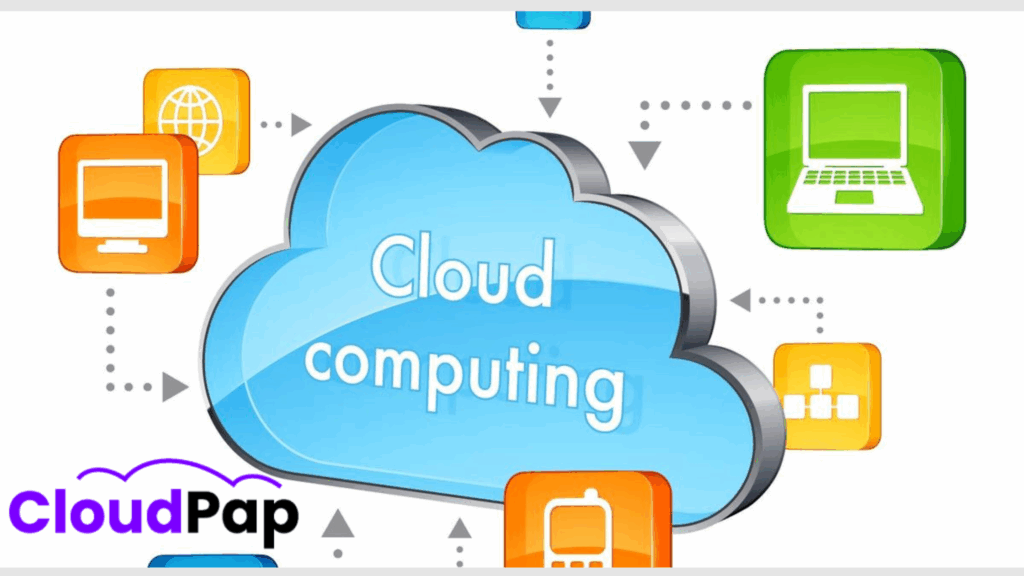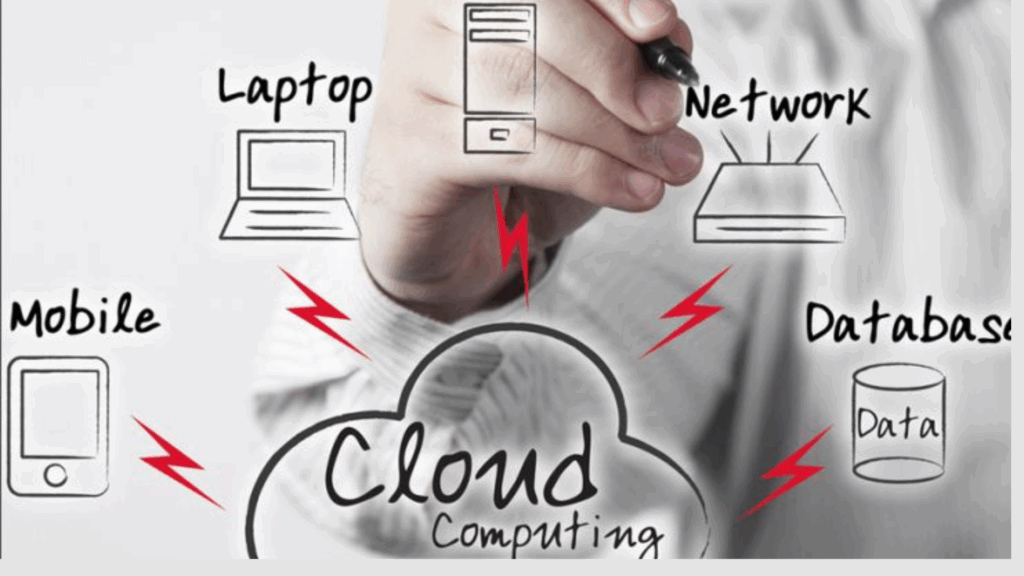Cloud computing is amazing….until it isn’t. In truth, despite all of its many perks, cloud computing is not all sunshine and rainbows.
Even with the general hype across the IT world, cloud computing does come with several disadvantages.
Today, we take a deep dive into the cave of cloud computing to bring you 9 of its dirty little secrets.

What Exactly Is Cloud Computing?
Cloud computing is basically using someone else’s computer resources like storage, servers, and softwares over the internet, rather than having your own.
As opposed to buying and maintaining physical hardware, you access these resources on demand and pay only for what you use.
Try thinking of it like this: Instead of owning all the appliances (computer resources) in your kitchen, you rent them from a service (cloud hosting provider like CloudPap).
You use what you need and pay only for what you use.
Key Features of Cloud Computing
On-demand access: You can access computing power, storage, and applications whenever you need them.
- No physical hardware: You don’t need to buy, maintain, or upgrade your own servers or software. The cloud provider handles all of that.
- Pay-as-you-go: You only pay for the resources you actually use, which can be much more cost-effective than owning and managing your own infrastructure.
- Scalability: Cloud computing allows you to easily scale your resources up or down as needed, so you can handle traffic spikes or adjust to changing business needs.
- Accessibility: You can access your data and applications from anywhere so long as there is internet connection.
Some of the examples of cloud computing services include:
- Email services: Could be Gmail or Outlook.com.
- File storage: Whether Google Drive or Dropbox.
- Software applications: Office 365, Salesforce.
- Websites and web applications: Many websites and web apps are hosted on cloud servers.
- Data storage and processing: Businesses use cloud services for storing and processing large amounts of data.
The Messy Truth Behind Cloud Computing
Even though cloud computing is a dream come true to many businesses, we cannot ignore some of the limitations that can arise. When not addressed properly, these can cause you to lose so much in your business. Below are some of the 9 most common cloud computing challenges:

Downtime
Cloud services are not immune to interruptions. Even the largest of providers are not immune to this trip. One great example is Amazon Web Services(AWS). On August 31, 2019, AWS experienced a major outage in one of their data centers in US-EAST-1 region, located in Northern Virginia.
This outage resulted in the disabling of 7.5% of EC2/EBS instances that caused platforms like Reddit and Adobe to grind to a halt.
Cloud services can be disrupted due to:
- Network Problems
- Hardware Failures
- Planned Maintenance
This could lead to disruptions on the users and businesses’ ends that are relying on said services.
Limited Control and Flexibility in Cloud Environments
One of the greatest limitation of cloud computing lies in the restricted control it allows organizations. Unlike the traditional on-site servers, where you can tweak and customize every detail to your heart’s content, most cloud services come with pre-set configurations which are maintained by the provider.
This in turn limits the organization’s ability to fully tailor the cloud environment to its operational and compliance needs. This brings about friction especially when businesses want to implement specific security measures, fine-tune system performance or simply ensure compatibility with legacy software.
For companies with unique needs or sensitive operations, this can feel more or less like a rental apartment: you are in it but not fully in charge.
Security and Privacy
Most cloud service providers have strict data security policies to keep data safe, but still storing your data somewhere out there in the digital ether isn’t risk-free. Once data leaves your own turf it is more vulnerable, especially in cases of data breaches where sensitive files can end up in the wrong hands.
This kind of vulnerability is dangerous because it opens doors to unauthorized access, privacy breaches, and even legal repercussions in a case where the industry has strict data protection rules.
A popular case is the Microsoft Azure breach, where attackers had successfully compromised over 50 executive accounts. This exposed very critical user data. The attackers were targeting high-level-staff through well crafted phishing and cloud account takeover tactics.
That incident alone exposed how, even with major cloud providers and tightened protocols, sensitive information can still be exposed during high-level breaches.
No Exit Strategy
For many, relying on a single cloud provider feels convenient, like smooth sailing at first. The truth remains that it can turn into a trap quickly. In fact, many businesses unknowingly trap themselves in a single vendor’s ecosystem, relying heavily on their tools, platforms, and infrastructure. Actually there is a name for this digital dependency: vendor lock-in. And breaking free is not only tough but also brutally expensive.
The problem usually arises from proprietary software, messy data integrations and the steep costs of moving data. Once all your operations are deeply rooted in one provider’s system, jumping ship often means tearing everything down and rebuilding it all again, something most businesses are not willing to do.
Take Apple for example. Back in 2017, they had to pay $50 million just in AWS data transfer fees. This accounted for 6.5% of their total annual cloud bill.
Inconsistent Performance Across Cloud Environments
Not all cloud computing experiences are created equal. One moment your app is running smoothly, the next it is being all laggy. Why? Well, inconsistent performance often comes from sharing resources, software mismatches or even overload of virtual machines.
The cloud may seem and feel invisible, but it still relies on physical hardware behind the scenes. That means that performance can vary wildly depending on the server load, the location and even the time of day at times.
This unpredicted performance can disrupt work flows, obviously irritating users and even damage your brand. It goes without saying that you have to stay ahead of the game. You do this by constantly monitoring performance and choose a cloud computing partner that prioritizes resource stability and user consistency.
Cost Surprises
The cloud might sound cheap until the bill comes. What starts as a few coins here and there snowballs fast to other charges like data transfer fees, auto-scaling costs, and vague pricing models.
In fact, according to a CloudZero report, only 3 out of 10 companies know exactly what they spend on cloud computing. That is scary! If you barely track every byte you use, trust me, your cloud bill will eat away at your profit.

Bandwidth Limitations in Cloud Computing
When it comes to cloud computing, bandwidth is more often than not overlooked. This is until it starts to slow you down. In cloud computing, bandwidth is a term used to refer to how much data can flow between your device and the cloud.
When it is limited, everything slows down. This is especially painful for teams who are transferring large files, streaming or even collaborating in real time.
Cloud computing is supposed to make things easier and faster and that is the very reason why we at Cloudpap have designed our systems to handle heavy workloads without crashing.
Doesn’t matter if you are backing files, sharing large documents or managing data-intensive workflow.
Support Gaps
Cloud computing works great, but when it fails, a good support team comes in handy. Not having one can leave you stuck. This is something we take seriously at cloudoon.
While many providers charge high fees for basic assistance, or route you through endless chatbots, we offer timely, human support without the headache. Our team is local, experienced, and ready to walk with you through any issue, whether it’s technical or strategic. We know that problems don’t wait, and neither should you.
Latency Challenges
In cloud computing, latency can be a dealbreaker. Especially for those users who rely on real-time performance. This delay, often caused by the physical distance between the user and the cloud data center, affects how fast data moves across the internet.
Real-time apps like gaming, trading platforms, or video calls suffer the most. And while cloud computing promises speed and agility, poor latency can frustrate you so bad.
The solution? Choose providers with strategically placed data centers, ideally, one closer to home. Like Cloudpap, where we focus on local infrastructure to boost speed and reliability.
How to Keep the Cloud from Becoming a Wild Ride
| Challenge | Smart Move for You |
| Downtime | Set up monitoring, status pages, fallback servers |
| Latency Challenges | Choose providers like Cloudpap with strategically placed data centers close to home |
| Limited Support | Work with providers that offer responsive, human-centered support |
| Bandwidth Limitations | Monitor usage and upgrade plans as needed |
| Inconsistent Performance | Opt for providers with stable infrastructure that ensure consistency across environments |
| Unexpected Costs | Use providers with transparent pricing. Those who help clients monitor and control costs |
| Vendor Lock-in | Design with portability in mind using open standards, containers, or multi-cloud approaches |
| Data Security Concerns | Ensure strong encryption, access controls, and regular security audits across all layers. |
| Limited Control | Choose flexible deployment options that allow admin access or infrastructure-level customization. |

Wrapping Up
Cloud computing opens up a world of possibilities, but it comes with its own set of challenges. The key is staying aware, asking the right questions, and building with intention. If you are thinking about leveling up your cloud game, now is the time to make smarter, future-proof moves.

